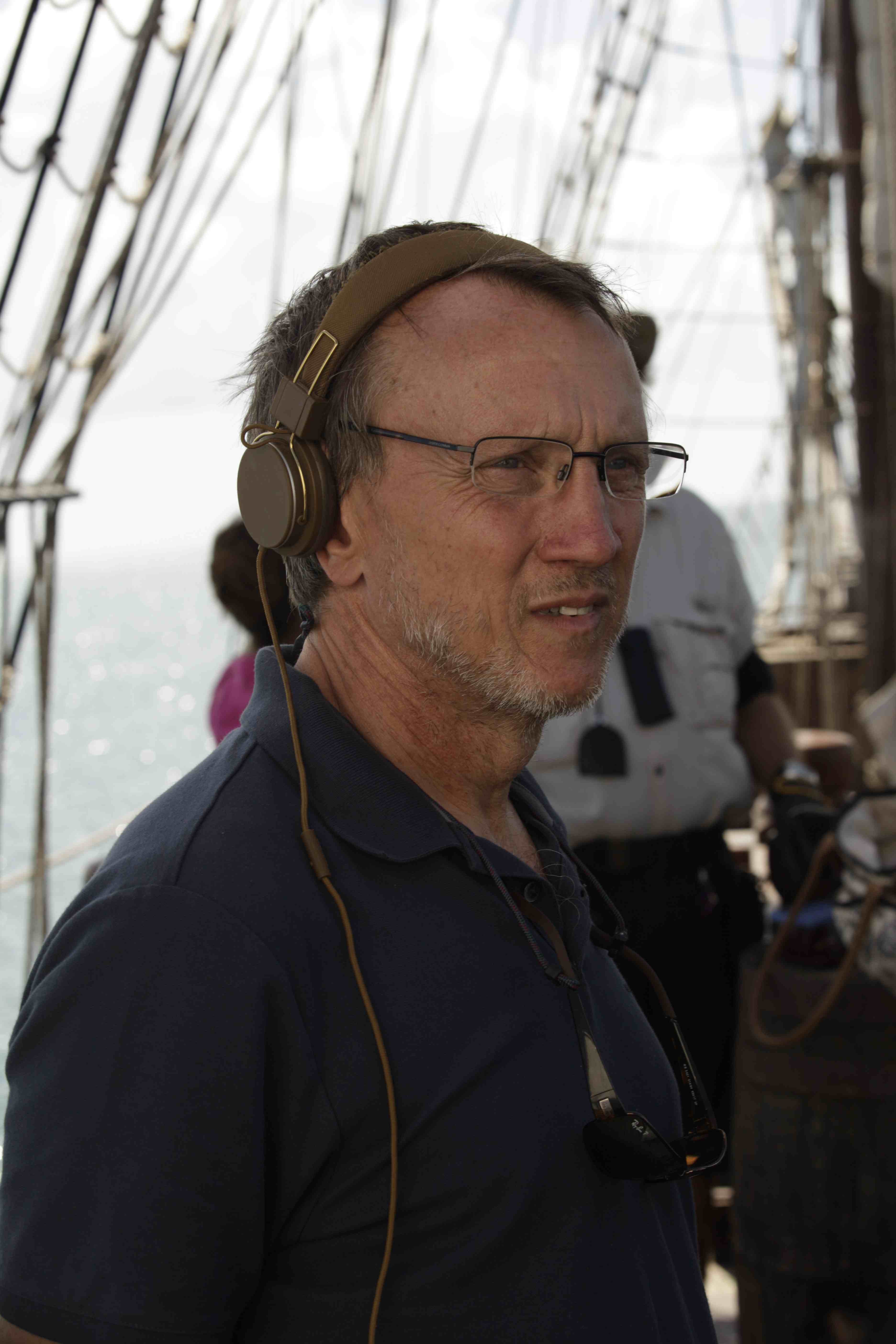Steve Barron was one of the titans of the 80s music video scene, a visionary director who came to define the decade with a series of scorchingly iconic promos. Classic Pop catches up with the trailblazer to reflect on his time working with, among others, Michael Jackson, Adam Ant, A-Ha, The Human League, The Jam and David Bowie…

Since helming his first music promo with The Jam’s Strange Town in 1979, Steve Barron would become one of the coming decade’s most in-demand video directors. Having cut his film-making teeth as assistant cameraman on such mega-budget blockbusters as Superman and A Bridge Too Far the Dublin-born Barron would soon find himself at the heart of London’s thriving music scene. Over the next decade he would be responsible for such era-defining videos as Billie Jean, Take On Me and Money For Nothing, before upping sticks to Hollywood and establishing himself on the big screen with movies including Teenage Mutant Ninja Turtles, Electric Dreams and Coneheads. Now primarily working in TV (his next project is a remake of Around The World In Eighty Days), we caught up with the video veteran to talk to him about his 40-plus-year career…
You started your career on some intimidatingly big movies. That must have been quite the tutorial in terms of learning about film.
I learned a lot about the practical process of film-making. Not so much about the storytelling aspect of it but certainly about technical process; lenses, the way to move the camera and all the nuances of it.
How did you get into the music video business?
It was really ‘right place, right time’. I was living in London and in my early twenties. I obviously had an interest and access into the world of entertainment and music – in the evenings I’d be going to the 100 Club or the Wag Club watching bands like The Jam, so that took me into that world. I was working on Superman and A Bridge Too Far during the day, but my night work was hanging out with people my age, I suppose. People were quite fascinated by the fact that I was doing these big movies, and I was kind of lured into [the music video world] in a way through my technical knowledge and obviously I had contacts to get hold of camera equipment.
When you look back at those early videos, the ones you did for artists like The Jam, Adam And The Ants and Secret Affair, what do you think? Do they stand up?
There’s a kind of sweet naivety there. I dunno, I haven’t seen the videos for years, but we got our ideas from whatever was around, going in without a real plan. Often we wouldn’t even have to hand in the idea early on, it was just, “Do one of those films.” It was really an exciting time and a real venture into the unknown.
In the days before MTV, how did the labels view music videos? Were they valued at all?
No, they were a nuisance. You’d get record companies in England who would be pressed by a record company in Holland or Germany or France who’d say this group is getting some airplay, we want a promotional film, because they’re not coming to our country. So that pressure seemed to be what motivated the UK record companies to spend a bit of money on a video, but they didn’t really value it. They couldn’t see that it would make a difference to sales.
One of your signature videos was The Human League’s Don’t You Want Me. It’s a very cinematic-looking piece. What was the inspiration behind it?
The film within a film idea was from Day For Night, the François Truffaut movie. We had enough budget that we could afford to shoot on 35mm. I wanted to make it cinematic because obviously I’d worked on a lot of these films and on 16mm you can’t get that cinematic look. We fought really hard and got a bigger budget from Virgin for that song. They thought it was going to be a hit, so they gave us a bit extra.
And that video led to you working with Michael Jackson on Billie Jean...
Michael said he’d seen the Don’t You Want Me video on MTV. He told me he thought it was very cinematic and that made it different to many other videos that were out. That’s what he wanted for Billie Jean. Though ironically with Billie Jean we weren’t able to shoot on 35mm! The note from his manager was that he wanted something magical, so that became the idea.
Did the launch of MTV help increase the artistry behind music videos, do you think?
MTV changed everything. It kind of lorded the genre and caused a big splash and got a lot of attention. Suddenly they became important, then the budgets got bigger. I was doing Jam videos in the late 70s, early 80s and they were £2,500-£3,000. By 1982/83, you’d be looking at £10,000-£15,000 per video and even upwards from that. Billie Jean was the biggest one I’d done and that was $50,000. That was a big budget for us.
You and Russell Mulcahy, who directed such promos as The Wild Boys, Vienna and Total Eclipse Of The Heart, seemed to be the leading music video directors of the time. Was there a rivalry there?
Just a respect, I think. I see Russell occasionally now even. He had a great eye and we actually worked together later on. I had a company called Limelight, and he came along as a director with us. There was just a mutual respect. We did quite different videos, but he was a massive pioneer.
When you weren’t making videos, were you imbibing a lot of MTV, just to check out what the competition was doing?
There wasn’t time. We were doing one or two videos a week! Obviously every time a new video that was catching attention came out we’d watch it. We were in touch with the record companies and when they had something they really liked, they would show us.
How would you generally come up with your ideas? Was it in collaboration with the band or artist or did it involve you listening to the song, notebook in hand?
Early on, it was generally down to the director. Nobody knew quite how to behave, I suppose. Brainstorming would have been a good idea, but the record companies were scared of it getting carried away. It was a much simpler route when you just got sent the budget and the track, sometimes the lyrics if you were lucky, and you came up with an idea and you’d try to get a bit more budget to make it look better. But it was generally your idea as the director, you would be responsible for the whole thing, so 95% of the time they were my ideas. You’d rarely get a visual idea from the band. I even worked with Bowie on a few songs. Although it was for the film Labyrinth, which already had an idea in a way, I thought he would insist on more things, but he was great and left it to me.
You directed a lot of videos for A-ha, including their iconic Take On Me promo. Why was that collaboration so fruitful?
I really loved working with them because their songs were very good to do visuals to. Things like Hunting High And Low are very cinematic sounding and The Sun Always Shines On TV has tremendous energy to put visuals to. I found it very inspiring to come up with images for their songs.
Do you have to like a song to make a good video for it?
I don’t think so, but you have to be triggered by it in some way. To be honest, when I heard Money For Nothing, it’s not my sort of song at all. If we’re talking about Dire Straits songs, Brothers In Arms is one that immediately moves me, whereas Money For Nothing doesn’t do anything. I don’t feel anything from it. I would never knowingly walk up to a record player and put that song on.
You moved into movies in the mid-1980s. Did you find them more satisfying creatively?
No. In 1984 I did my first feature film [sci-fi romcom Electric Dreams] and that was really difficult. I’d been around big movies, so I was comfortable with that, but being the boss and suddenly having a whole extra additional criteria set out in front of you, in terms of storytelling, actors, narrative and relationships, it was a lot different. And more difficult. I was quite glad to get back to music videos after that.
Even after that short time away, did you notice any difference in the music video world by the time you went back to it?
It had changed, because in 1985 I was given $100,000 to make Dire Straits’ Money For Nothing, and then another $100,000 to do this unknown band called A-ha! Budgets had changed, the importance of videos had changed. The difference in the music world was that the acts that seemed to be getting through were the ones with some visual context. It wasn’t just about the music, it was about the whole package.
You moved into movies more full-time towards the end of the 1980s, but returned to music videos in 2010, directing A-ha’s final single before splitting, Butterfly, Butterfly.
They’ve got back together since, but back then they were breaking up after 20 or so years. Because I did their first seven or eight they asked could I do their last one, so I did Butterfly, Butterfly as a sort of finale for them.
The music video seems to be a dying art form these days.
I heard a few months ago that music videos have started to be valued again and beginning to be economic to make on a big scale. I don’t know if that’s true. But I still really love music and I love the idea of putting film to music, I just don’t get offered them anymore. I’m from another era, I suppose. It’s only worth doing for me if I can do something really special, because it’s a lot of work for not a lot of reward!
Steve O’Brien
Classic Pop may earn commission from the links on this page, but we only feature products we think you will enjoy.


